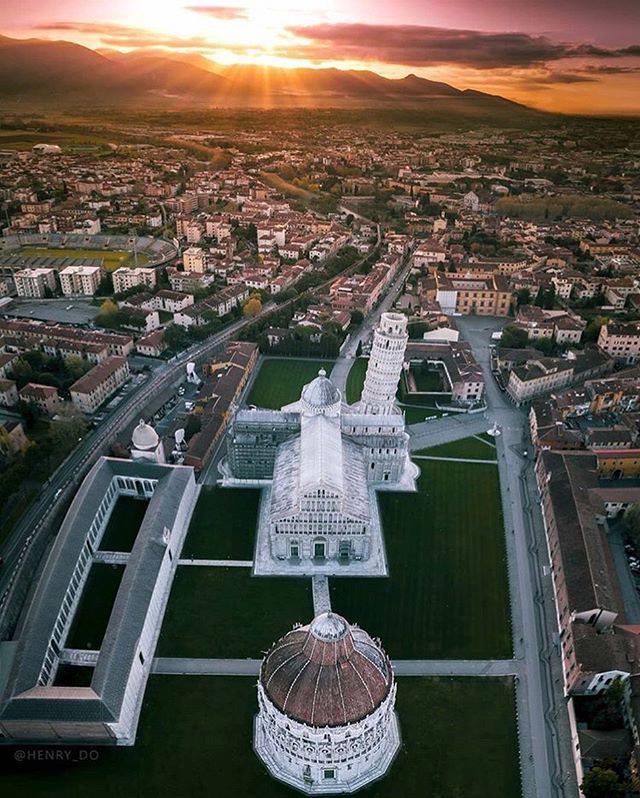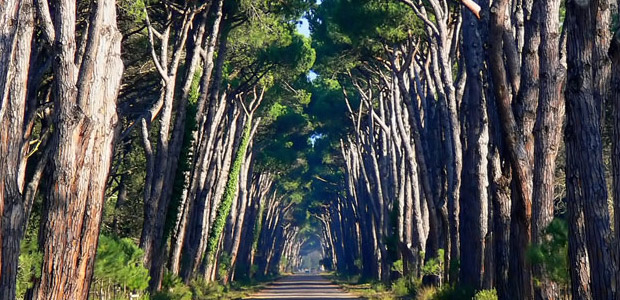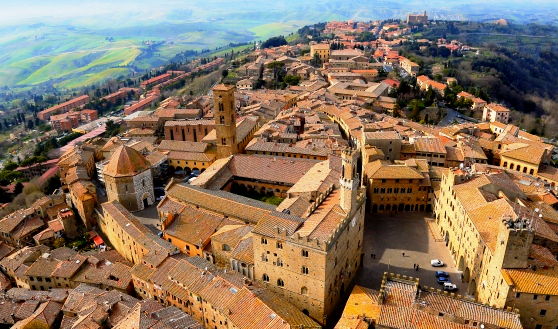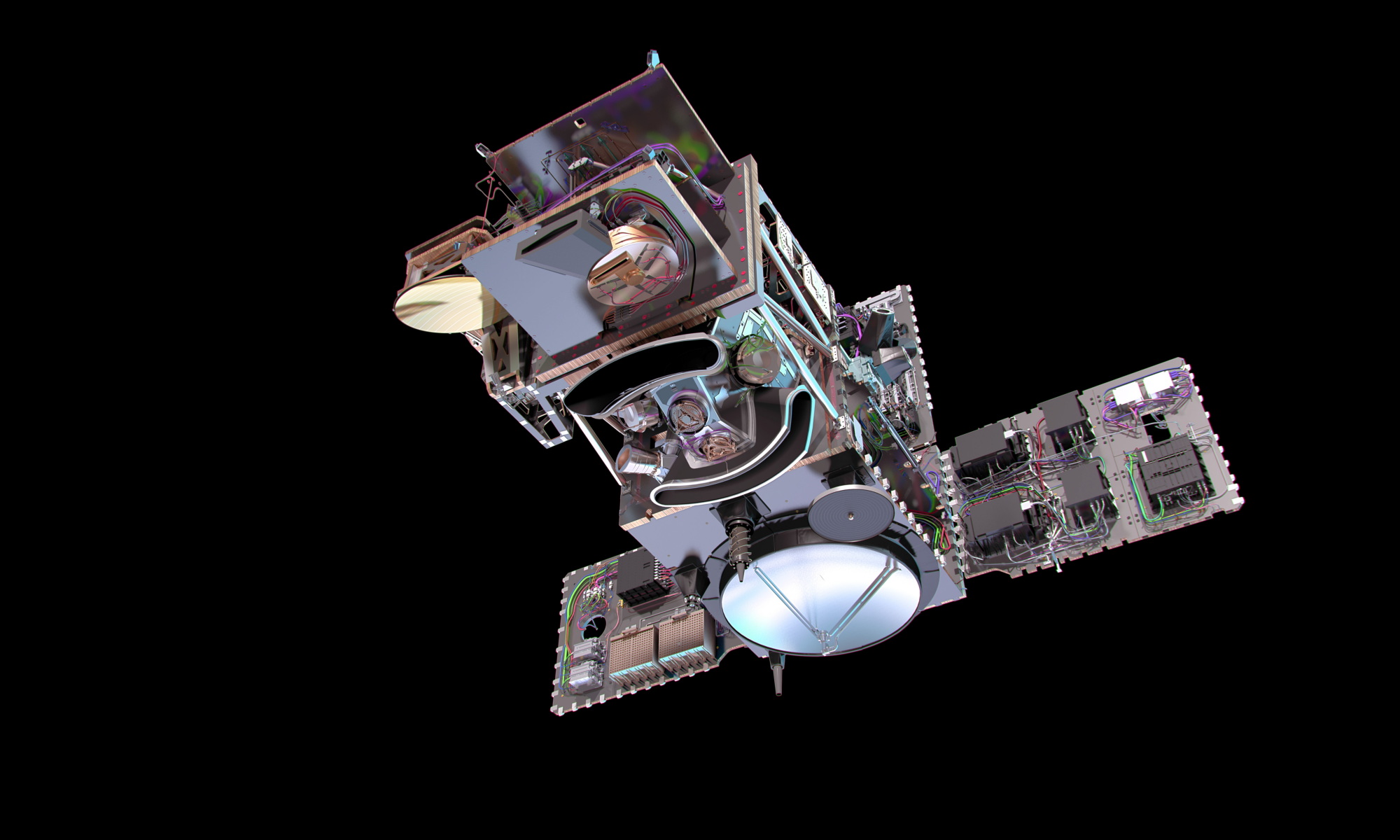The Town
The city of Pisa contains treasures of inestimable value that make it one of the most important Italian art cities. The focus of its beauty is the Piazza dei Miracoli, where the Cathedral and the famous Leaning Tower are located.

The white marble monuments, which seem to rise from the turf from the square, offers visitors a unique show of its kind. The harmony of the loggias is repeated in the nearby cathedral and the most distant Baptistery, creating a continuum of style and visual beauty.
The Cathedral impresses with its grandeur tempered by the elegant decorations that punctuate the facade. The Baptistery is striking given the eclectic use of the Gothic style in the two superior orders, superimposed on the present Romanesque decoration on the lower floors. The Monumental Cemetery, the last monument of the Piazza dei Miracoli, stands out for the simplicity of its external structure, which is matched by a wonderful cloister inside. Finally, also the Museo delle Sinopie, hosting the preparatory drawings of the frescoes of the cemetery, and the Museo dell’Opera, with its rich collection of sculptures, paintings and ancient shrines, are also located in the Piazza dei Miracoli.
A few minutes from the famous Piazza, in the dense web of medieval streets of Pisa, opens the scenic Piazza dei Cavalieri, emblem of the Medici’s domination of the city. Designed by Vasari to celebrate the Order of the Knights of Santo Stefano wanted by the Grand Duke Cosimo I dei Medici, it contains the most important buildings and churches of Pisa. Entering the Piazza, the attention is captured by the majestic facade of the Palazzo dei Cavalieri. All around stand, each with its peculiarities, the other buildings that make this square one of the finest examples of Renaissance architecture in Italy.
Other wonderful examples of Pisan architecture can be found along the Arno river, which is lined with majestic palaces, Romanesque and Gothic churches and medieval and Renaissance fortresses. At night the Lungarno becomes more fascinating due to street lights and buildings that are reflected in river water. The atmosphere becomes even magic during the night of San Ranieri, when the outlines of buildings and bridges are decorated by thousands of candles to celebrate the saint protecting the city.
Nature
A Nature that Enchants, to Live and Discover
The territory offers a wide variety of landscapes and ecosystems: from the green hills of the Monti Pisani the sands and marls of the Metalliferous Hills, the whites of Volterra ravines, covered with vineyards and olive groves, the Pisan Hills, where the red clay lands are interspersed with areas beaches; the geysers of Larderello; a coastline fringed with dunes and pine forests.

San Rossore Park
San Rossore Park extends along the coastline of the provinces of Pisa and Lucca in the area in ancient lagoons and marshes. The variety of natural environments (dunes, beaches, hygrophilous forests, stretches of Mediterranean vegetation) and the presence of water (ditches, canals, wetlands, lakes, rivers, ponds) are the main aspects characterizing the San Rossore Park. This variety in turn determines the richness and diversity of plant and animal species, consisting in numerous species of birds, including several sedentary species of birds (purple heron, mallard, marsh harrier), plus a strong presence of deer and wild boar and other smaller mammals such as foxes, hedgehogs, dormice, badgers and squirrels. The flora of the park includes some rarities such as the sundew (a small carnivorous plant), the Greek Periploca (a rare creeper), the marsh orchid, the pink hibiscus and florida ferns. The vegetation and coastal dune belt is characterized by pioneer plants, sometimes very beautiful.
Oasis and Protected Areas
The province of Pisa is beautiful in nature even with its blend of protected areas, characterized by a considerable variety of natural environments. In protected areas, recreational activities and nature are remarkably linked in sustainable forms of tourism. It is possible to bike along the winding roads through medieval villages perched on the slopes of the Pisan hills or along the banks of the Serchio river, or to hike in the Val di Cecina on the Pisan mountains.
Countryside
Cultivated hills and orchards, forests of chestnut trees, olive trees and vineyards: this is the countryside of Pisa, with its many colors, scents, foods and wines that can be found only here. In the beautiful countryside of the area, trails for hiking, mountain biking and horseback riding branch in close contact with nature and with a panorama of colors that fade and change with the seasons and times of day. Here you can follow a different route each time to discover the nearby coastline, landscapes of great natural beauty, historical villages and towns, in search of Romanesque churches, medieval fortresses and watchtowers.
Sea

Tirrenia and Marina di Pisa
Tirrenia, a modern and elegant resort surrounded by large Mediterranean pine woods, is located only a few kilometers from Pisa. The resort is ideally suited for sports on the beaches or in the many facilities into green pine forest: beach volleyball, sailing, diving, tennis, soccer, golf, horse riding. In the green pinewood of Tirrenia one can relax by walking, biking or horseback or visiting the Dune Oasis, a protected area managed by the WWF with its unique environment of flora and fauna.
Finally, in Tirrenia and in the nearby Marina di Pisa do not miss the fun pubs and trendy nightclubs on the beach, the possibility of horseback riding in the pine forest or sailing to the Cinque Terre, the Capraia and Elba islands.
Spas and Wellness
Hot Springs and Golf: Between Welfare and Health
The Pisan territory is rich in water springs and for their healing properties since ancient times have given rise to frequent spas not only for therapeutic purposes but also for beauty treatments, research and fitness to regain prosperity and tranquility.
Terme di Casciana
Immersed in the landscape of the Pisan hills, Casciana Terme is a small and friendly town that holds a historic and valuable: its beneficial hot springs. Legend says that the discovery of the healing power of water Casciana took place a thousand years ago thanks to the Countess Matilda of Canossa. The first thermal pool was built in 1311 at the behest of Federico da Montefeltro, but it was only around half of the 800 that Ferdinand III of Lorraine built the first spa itself.
Terme di San Giuliano
The beneficial effects of the waters of the Terme di San Giuliano were already known at Etruscan and Roman times, when the first structures were built to exploit the mineral springs. The Terme di San Giuliano are ideal not only for those who seek the therapeutic effects of water, but also for those who want a relaxing holiday away from the hectic pace of everyday’s life.
Terme di Uliveto
Since the Middle Ages the Terme di Uliveto are the perfect place to take care of themselves not only by drinking their precious water, but also by relying on the work of professionals who develop wellness programs specifically designed to restore the physiological balance in a natural way. There you can attend yoga sessions, attend swimming lessons and water aerobics in the pool, toughen your body and mind by practicing martial arts, play tennis, try archery, or just relax enjoying the scenery.
Golf
In Tirrenia, along the coast south of Pisa, the Cosmopolitan Golf & Country Club is of particular interest because of great the variety of environments encountered along the eighteen holes golf path. The resort, enriched by two swimming pools and its own residence equipped with all amenities, is just half a mile from the sea, thus representing the ideal solution for anyone seeking a golfing holiday and relaxing days at the beach.
Art Towns and Villages

Volterra
Volterra is a jewel of Etruscan, Roman, Medieval and Renaissance art. In addition Volterra also possesses a pristine landscape, a more relaxed lifestyle and an artistic handicraft unique in the world: the alabaster. The Arch Gate and the Porta Diana are the most significant remains of the Etruscan period, while the theater dates to Roman times (I century BC). Due to its isolated location on top of a hill dominating the valley of the Cecina river, Volterra still shows today the atmosphere of a medieval village enclosed within its walls and developed around the Piazza dei Priori, the Romanesque Cathedral, with the Baptistery and the elegant bell tower, and a nummber of ancient monumental palaces.
Volterra has a set of museums of great interest. The Guarnacci Museum houses a collection of Etruscan art including the Stele of Avile Tite, l ‘urn of married couples in terracotta, the Lorenzini Head and the bronze statuette known as Ombra della Sera. The Municipal Gallery preserves valuable paintings including the Deposition of Rosso Fiorentino and the Annunciation by Luca Signorelli. Finally, the Diocesan Museum of Sacred Art contains works from the cathedral and other churches in the diocese.
San Miniato
San Miniato stands on the crest of a hill dominated by the Rocca of Federico II. Also known as the City of Truffles, is a trove of works of art in which the typical medieval fabric perfectly integrates with urban structures of a later period. The core of San Miniato is occupied by the Romanesque Cathedral of Santa Maria Assunta e San Genesio, the fourteenth-century Palazzo dei Vicari, and the Palazzo Comunale, where frescoes by Giotto school are preserved. The old town of San Miniato hosts an interesting set of exhibitions, historic buildings, collections and museums, including a Museum of Writing from the Stone Age to the present. San Miniato also offers an intense cultural life: the Theater Festival in July, and the summer series of classical music concerts named “A Castle of Sounds”.
Villages
Visiting the surroundings of Pisa, one is immersed in a landscape of harmony and tranquility where the green of the hills is the setting for charming villages. Impressive fortifications surround picturesque alleys that wind between tower-houses, churches and small shops.
Vicopisano is a small town rich in history, with a large number of medieval towers whose tops offer a splendid panorama. The village is connected by the Oil Road to the nearby Calci, with its splendid Certosa, and to the ancient village of Buti, the scene of fierce battles between the towns of Tuscany.
Lari, the city of cherries, retains intact its medieval urban structure, while preserving the picturesque houses, narrow alleys and imposing mass of the Castello dei Vicari, accessible by a stone stairway that offers a splendid view over the surrounding hills rich with vineyards, olive groves and fruit trees.
Getting There and Around
The county of Pisa, made up of 39 municipalities, is in a privileged position in the western part of Tuscany between the counties of Lucca to the north, of Florence to the east and north-east, of Siena to the south-east, of Leghorn to the south, and the Tyrrhenian Sea to west. It can be easily reached by car via the A12 Genoa-Rosignano freeway and the divided highway FI-PI-LI, by boat through the port of Livorno and by plane through the “Galileo Galilei” International Airport.
Airplane
The “Galileo Galilei” International Airport is connected with direct flights to several Italian cities and many international destinations, in Europe and beyond. The airport is located about two miles from the historic center of Pisa, which can be reached in few minutes by train, by bus (LAM Rossa) or by cab.
Train
Pisa Central Station, located in the southern periphery of the town, is a major regional and national railway hub, with frequent connections to Florence, Rome, Genoa and Lucca.
Bus
Bus services connect Pisa with nearby towns (Livorno, Lucca, Viareggio and Pietrasanta) and various Italian regions (Calabria, Marche, Abruzzo, Basilicata, Calabria, Campania, Sicily, Puglia. Direct buses connect the airport of Pisa with the airport and the central station of Florence.
Car
Pisa is connected to Florence through the A11 (Firenze-Mare) freeway and the Firenze-Pisa-Livorno motorway (SGC FI-PI-LI), to Rome through the E80-SS1 Aurelia highway, to Genoa through the A12 (Genoa-Rosignano) freeway.
The access to the historic center of Pisa falls largely in the Limited Traffic Zone (ZTL). Access to that area is allowed only to authorized vehicles. Electronic entrance gates are monitored by cameras 24 hours on 24 and unauthorized access is fined. Temporary authorizations are issued to visitors with impaired mobility or staying at a hotel within the ZTL.
On Foot
Thanks to its compact size, the concentration of the places of interest in the historical centre and the plentiful pedestrian areas, Pisa is ideally set for sightseeing on foot. The bicycle is an equally good value and alternative means of transport. Long used by locals and the numerous university students, the success of various bike and four-wheel bicycle ventures that have been launched in the city in recent years attest to its growing appeal.

